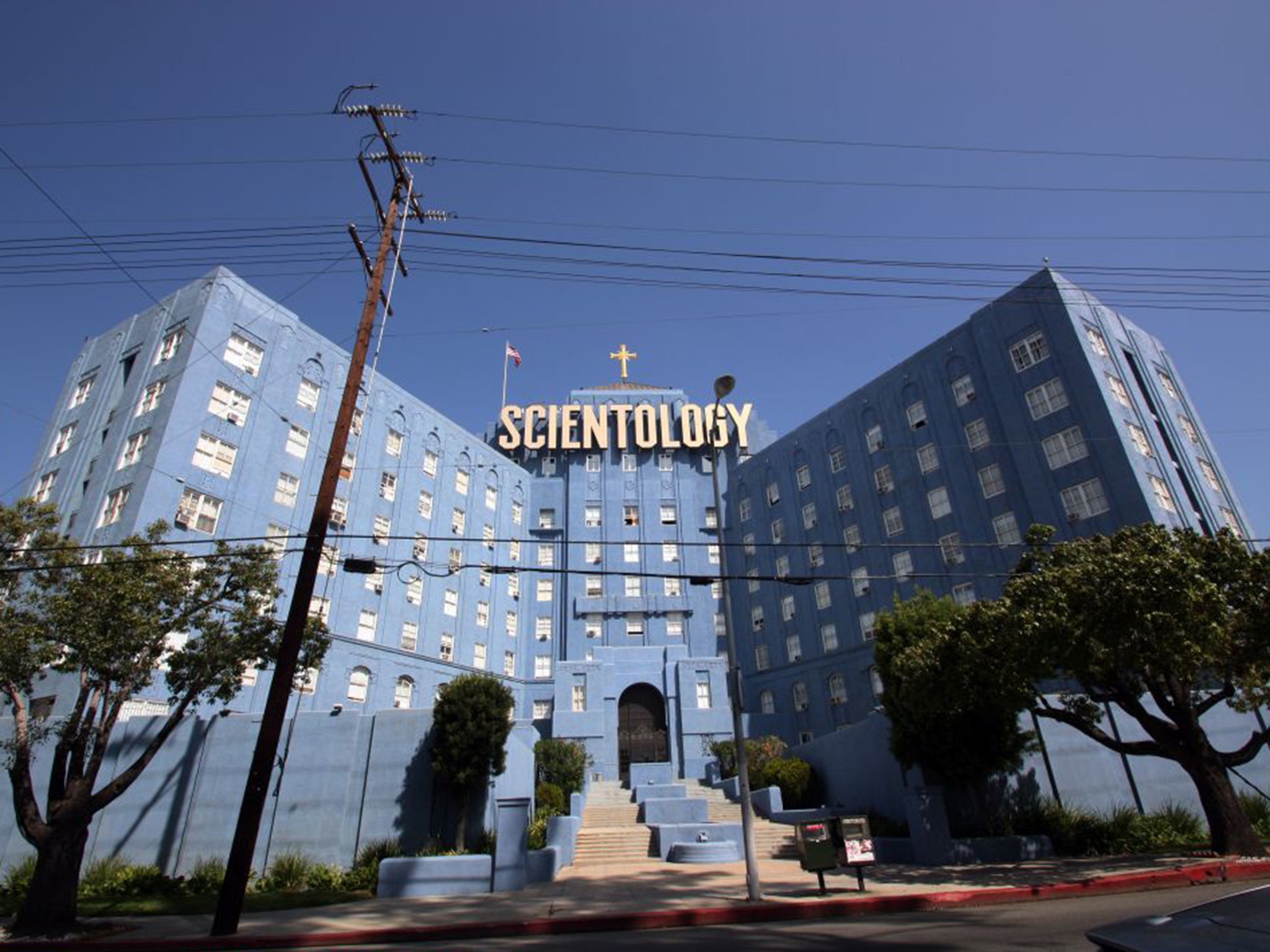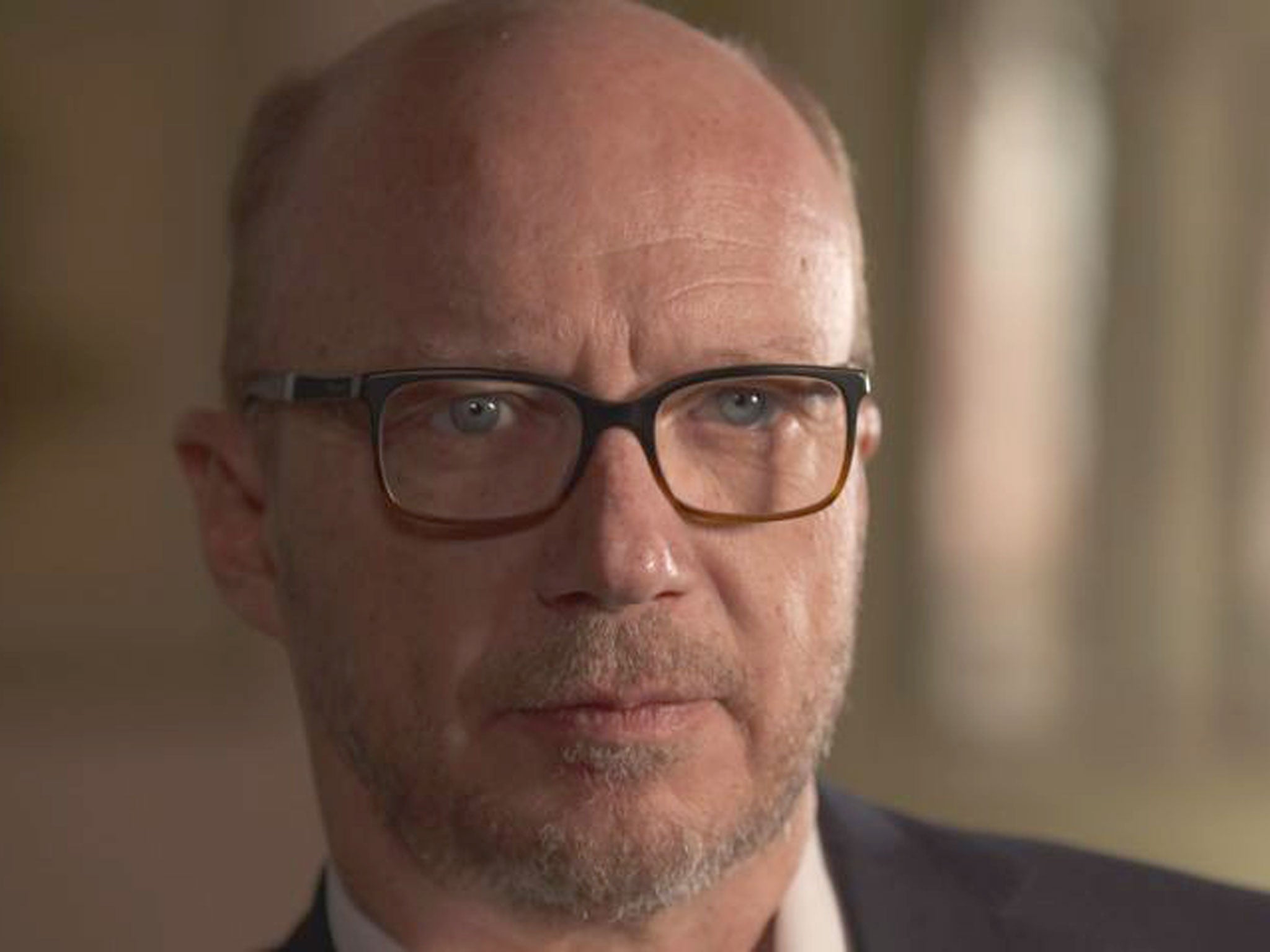Going Clear: Scientology and the Prison of Belief, film review: Chilling inside views on a secretive church
(15) Alex Gibney, 119 mins

Your support helps us to tell the story
From reproductive rights to climate change to Big Tech, The Independent is on the ground when the story is developing. Whether it's investigating the financials of Elon Musk's pro-Trump PAC or producing our latest documentary, 'The A Word', which shines a light on the American women fighting for reproductive rights, we know how important it is to parse out the facts from the messaging.
At such a critical moment in US history, we need reporters on the ground. Your donation allows us to keep sending journalists to speak to both sides of the story.
The Independent is trusted by Americans across the entire political spectrum. And unlike many other quality news outlets, we choose not to lock Americans out of our reporting and analysis with paywalls. We believe quality journalism should be available to everyone, paid for by those who can afford it.
Your support makes all the difference.In advance of the release of Alex Gibney's Scientology doc Going Clear, there have been reports of legal pressure being placed on UK distributors and broadcasters not to show the film. You can understand why the Church of Scientology feels such alarm. This is a fascinating documentary, chilling and occasionally comical. It is not one that makes you feel much admiration either for movie star and prominent Scientologist Tom Cruise, or for the Church's current leader, David Miscavige.
One of the film's frustrations is that no current Church members appear on screen to offer their point of view. Gibney approached Miscavige, Cruise, John Travolta and several other leading figures in Scientology but they all turned him down. Going Clear is also full of disclaimers from the Church denying the allegations against it in the film and blaming them on "discredited former Scientologists".
"Tom Cruise's lawyer says that there is no credible information that Tom Cruise ever wiretapped Nicole Kidman, wanted to wiretap her, asked anyone to wiretap her or believes anyone did wiretap her," an intertitle flashes up during a passage about the break-up of the Cruise-Kidman marriage. A similar intertitle relates to assertions made about Travolta.
The interviewees Gibney has collected are an impressive bunch. They include the Oscar-winning writer-director Paul Haggis (a Scientologist for 35 years), New Yorker writer Lawrence Wright (on whose book the doc is based) and a cluster of former Scientologists, many of them once very senior. He has also dug up plenty of archive material of Miscavige, Cruise and co. An Oscar-winner himself, Gibney is known for scrupulously researched documentaries such as The Armstrong Lie (2013), about the cyclist Lance Armstrong's fall from grace.
Like Wright's book, Going Clear is, effectively, divided into two parts. The first deals with the setting up of the Church by L Ron Hubbard. As portrayed, Hubbard was a flamboyant and contradictory figure. A Depression-era pulp sci-fi writer who published more than 1,000 books, Hubbard hammered away so hard at the typewriter that sweat would drip on to the keyboard. He was a fabulist who spun colourful yarns about everything from his field research to his wartime exploits. We learn about his post-war association with the scientist and inventor Jack Parsons, their shared obsession with the English occultist Aleister Crowley, and the immense success Hubbard enjoyed with his 1950 book, Dianetics.
Gibney makes extensive use of the recollections of Hubbard's second wife, Sara Northrup. "He (Hubbard) said many times that the only real way to make any money was religion. That was essentially what he was trying to do," she suggested. "We were surrounded by sycophants. He began to believe that he was a saviour and hero; that he really was this God figure."
In 1950s America, Hubbard's message hit a nerve. We learn about the "E-meters" (lie detector-like devices) used in "auditing" personalities. Gibney suggests that Dianetics turned out to be a passing fad, "like the hula hoop", but Hubbard repackaged his ideas. Through Scientology, he promised "a civilisation without insanity, without criminals and without war". His utopianism seemed appealing in the late 1960s – a "way of getting high without drugs". The Church established itself in Hollywood, buying its LA Celebrity Centre in 1969.
The journalist Kim Masters suggests that, "In an industry like Hollywood, where stardom is such an elusive quality," Scientology offered reassurance against rejection and failure. "If you give them all your money, they will make anything possible in your life," says Haggis, recalling the way the Scientologists were first described to him when he was a 21-year-old dreaming of breaking into the film business.
We learn of the "billion-year" contracts that members of the Church's inner cadre, the Sea Org, were asked to sign. Another bizarre element is its "creation myth", involving galactic overlords, volcanoes, disembodied immortal spirits and hydrogen bomb explosions.

Watch Apple TV+ free for 7 days
New subscribers only. £8.99/mo. after free trial. Plan auto-renews until cancelled

Watch Apple TV+ free for 7 days
New subscribers only. £8.99/mo. after free trial. Plan auto-renews until cancelled
Wright speculates that Scientology became a form of "self-therapy" for its troubled creator: "If he (Hubbard) was just a fraud, then, at some point, he would have taken the money and run but he never did that. He spent much of his day on the E-meter, trying to work out what was going on inside his own mind."

After Hubbard died (or "discarded" his body, as followers were told) in 1986, David Miscavige became leader. As shown here, he appears to be a ruthless figure with a domineering side. The interviewees have grim stories about the bullying and physical abuse that even senior Church members allegedly endured. Using FBI testimony, the film describes the experiences of the young Scientologist Nazanin Boniadi, assigned to be the new girlfriend for Tom Cruise. She was eventually discarded and (Haggis claims) punished for talking about her experiences by being made to clean "out public bathrooms on her hands and knees with a toothbrush while other people she knew were stepping over her". (The Church denies that the search for the girlfriend for Tom Cruise took place.)
Anyone outside the Church who criticises or attacks it, whether journalists or tax officers or former Scientologists, is seemingly "fair game" for harassment and attack. The implicit charge against celebrities such as Cruise and Travolta is that they turn a blind eye to the bad behaviour around them. Having famously faced down the IRS, the Church is not liable for taxes. According to the documentary, it is now a "kind of tax-free shell company" worth over $3bn.
Gibney is too subtle and diligent a film-maker to indulge in a one-sided hatchet-job. The tone of Going Clear is inquisitive, not sensationalist. The documentary is painstakingly researched. If its accusations are "entirely false" (as the Church claims), it is surprising that quite so many former members continue to make them.
Join our commenting forum
Join thought-provoking conversations, follow other Independent readers and see their replies
Comments